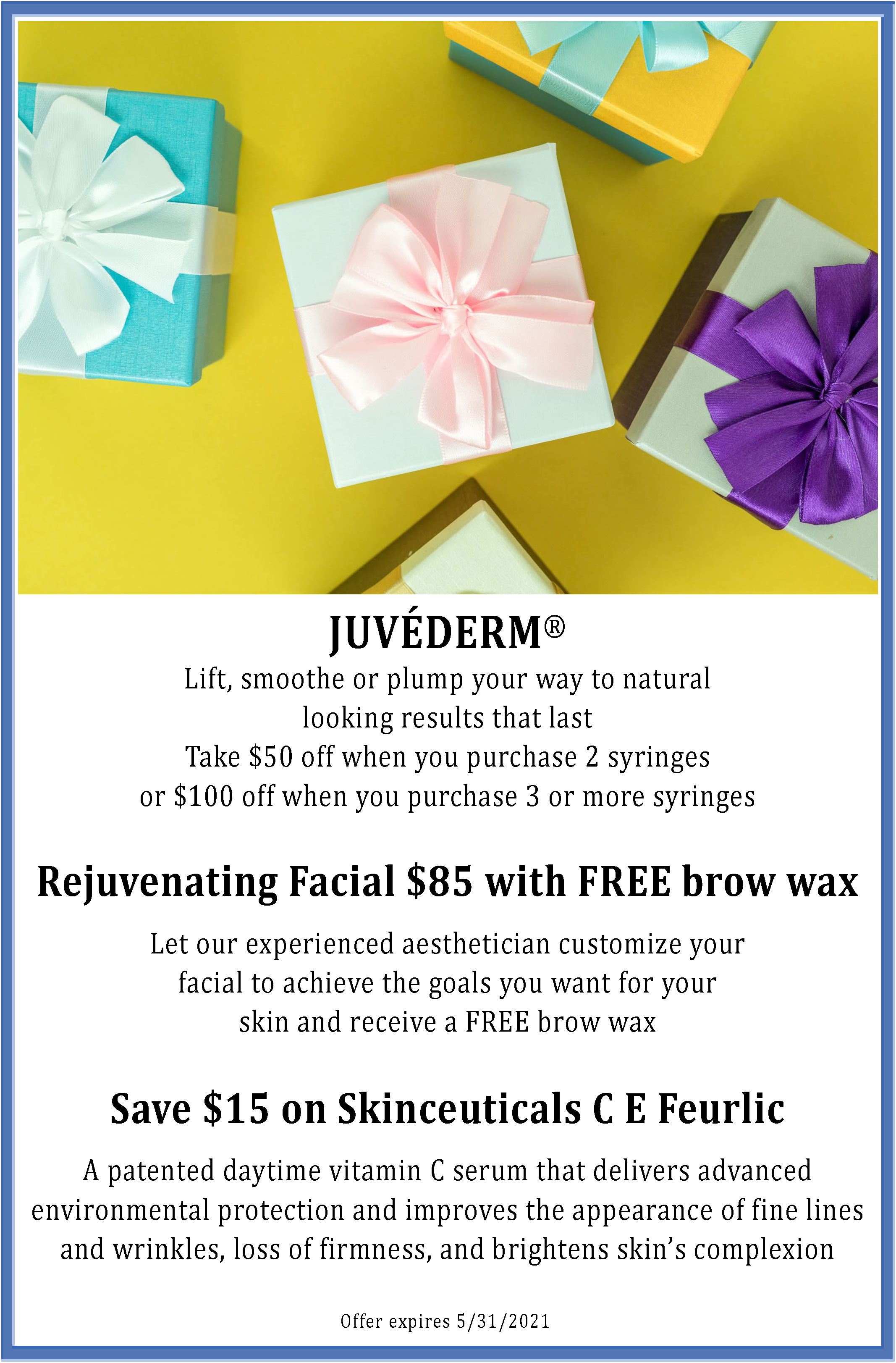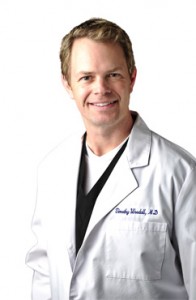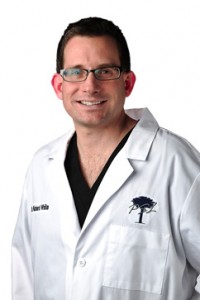May Promotions





By John Carruthers, staff writer, American Academy of Dermatology
 Raising funds for community health care can be a difficult proposition under the most forgiving of circumstances. For Rock Hill, S.C., dermatologist Timothy Woodall, MD, the challenge is to raise those funds in a poor rural community. As a member of the board of the Union County Healthcare Foundation for seven years — six of those as chairman — he has been tasked with raising funds for the hospital district, emergency services, and local nursing homes. Dr. Woodall has spent that time outperforming expectations.
Raising funds for community health care can be a difficult proposition under the most forgiving of circumstances. For Rock Hill, S.C., dermatologist Timothy Woodall, MD, the challenge is to raise those funds in a poor rural community. As a member of the board of the Union County Healthcare Foundation for seven years — six of those as chairman — he has been tasked with raising funds for the hospital district, emergency services, and local nursing homes. Dr. Woodall has spent that time outperforming expectations.
“Serving others like this, it’s what my parents raised me to do.”
Union County, made up of former mill towns located in the north of the state, consistently struggles with high unemployment; the October 2011 rate reached 16.7 percent. Despite this, Dr. Woodall has managed to raise over $750,000 for county health services during his time heading the foundation’s fundraising.
“When I was asked to serve on the board, it was a no-brainer. I can raise money for a number of different causes, and it all goes into the community. It makes a lot of sense for me as a physician.”
One of Dr. Woodall’s largest projects was raising funds for the purchase of a state-of-the-art rescue vehicle, which can transmit EKG data to the local emergency room and is also able to affect a river rescue if necessary.
Apart from his work with the foundation, Dr. Woodall also undertakes fundraising and volunteerism through his local church. He put on a golf tournament to purchase a water filtration system for a Haitian village stricken with cholera.
“Every Thanksgiving, my family used to work with local churches to feed the needy. My parents were always very involved with different charity organizations. There was no epiphany, it’s just what I’ve always done, and it’s been immensely satisfying.”
 Since 2000, the American Contact Dermatitis Society names an “Allergen of the Year” to draw attention to chemicals often causing contact dermatitis. Contact dermatitis is an allergy that has a different mechanism than allergies like hay fever or peanut, which are often immediate in the onset of symptoms. Contact dermatitis is a delayed allergic reaction and usually arises 24-48 hours after exposure. It produces an itchy red rash that can blister, and it often takes several days to weeks for the rash to dry up and flake off.
Since 2000, the American Contact Dermatitis Society names an “Allergen of the Year” to draw attention to chemicals often causing contact dermatitis. Contact dermatitis is an allergy that has a different mechanism than allergies like hay fever or peanut, which are often immediate in the onset of symptoms. Contact dermatitis is a delayed allergic reaction and usually arises 24-48 hours after exposure. It produces an itchy red rash that can blister, and it often takes several days to weeks for the rash to dry up and flake off.
Methylisothiazolinone (MI) was announced as the 2013 Allergen of the Year in the journal Dermatitis earlier this year. MI is a biocide often used to control mold or bacterial growth. If a cosmetic product has water in it, it has to have a preservative like MI so bacteria will not grow. MI can be found in some face creams, mascaras, shampoos, body washes and even wet wipes.
Rashes can be caused by a number of things, including chemicals like MI. If you have a persistent skin rash, be sure to call us at 803.329.6030 or book your appointment online.
Past Contact Dermatitis Society Allergens of the Year:
2000 Disperse blue dyes
2001 Gold
2002 Thimerosal
2003 Bacitracin
2004 Cocamidopropyl betaine
2005 Corticosteroids
2006 Paraphenylenediamine
2007 Fragrance
2008 Nickel
2009 Mixed dialkyl thiourea
2010 Neomycin
2011 Dimethyl fumarate
2012 Acrylates
2013 Methylisothiazolinone
Summer means lots of out-of-doors time. Whether at beaches, barbeques, hanging out in the park or at the pool, most people catch more sun rays this season than other times of the year. In the process, some will get a suntan while others, unfortunately, will experience the painful redness, peeling and blistering that can occur with a bad sunburn.
So what is the skin up to when it starts soaking up sunlight and changing its hue this summer? Essentially, a suntan results from the body’s natural defense mechanism kicking in against damaging ultraviolet sun rays. When the defenses are overwhelmed, a toxic reaction occurs, resulting in sunburn.
The defense mechanism is a pigment called melanin, which is produced by cells in our skin called melanocytes. Melanin absorbs ultraviolet light and dissipates it as heat.
“Melanin is a natural sunscreen,” said Gary Chuang, an assistant professor of dermatology at Tufts University School of Medicine. “When your body senses sun damage, what it does is it starts sending out melanin into surrounding cells and tries to protect them and shield them from getting more damage.”
Everyone has about the same number of melanocytes, Chuang said, but people vary in how much and what colors of melanin they produce. Darker skinned people have more natural sunscreen at their disposal. Even when getting a boost from artificial sunblock creams and the like, though, people are all ultimately vulnerable to the sun’s ultraviolet wrath.
“It doesn’t matter how much sunscreen you have on — if you are lying there forever and ever, some of the radiation will definitely penetrate through,” said Chuang. “Even if you have a tan you can get a sunburn, and people with dark skin types can get a sunburn if out long enough.”
Invisible ultraviolet light carries more energy than the light visible to humans, and this energy packs a tiny punch.
When a UV photon strikes the skin, it can damage the DNA in the body’s cells. It does this by breaking the orderly bonds between the four nucleotides, adenosine, thymine and guanine. So-called thymine dimers form, when two thymine nucleotides bind together, throwing the whole shape of the DNA molecule out of whack.
The cell with the messed-up DNA usually then commits suicide, a process called apoptosis. “The cells receive so much radiation that they undergo apoptosis,” said Chuang.
The body senses this destruction and over the course of several hours starts flooding the area with blood to help with the healing process. Painful inflammation occurs as well. Usually within half a day of overindulging in the sun, the characteristic steamed-lobster look of a sunburn begins to make itself known, and felt.
With very bad sunburns, thermal damage in the manner of second-degree burns not unlike that caused from being too close to a fire can set in. The skin blisters as a result, with liquid-filled, protective bubbles forming over areas of tissue damage.
Several days after the initial sun-wrought carnage, dead skin cells in the blasted region will start to peel off. “The cell signals the body that it has received enough radiation and has a chance of becoming mutated, so [the cell says] ‘Now you need to die off before it becomes problematic,’ and you get that sloughing of the skin,” said Chuang.
Sometimes the cells with sun-caused mutated DNA do turn into problem cells, however, that do not call it quits and keep proliferating as cancers. “The UV light causes random damages in the DNA and DNA repair process such that cells acquire the ability to avoid dying,” said Chuang.
Skin cancer is the most common form of cancer in the United States. People who allow themselves to get sunburnt repeatedly are at much higher risk. The risk for the deadliest form of skin cancer, called melanoma, doubles for someone who has received five or more sunburns, according to the Skin Cancer Foundation.
To avoid skin cancer, as well as the painful nuisance of a sunburn, Chuang advises people to cover up and apply sunscreen liberally.
“The sunscreens I like are physical blockers,” Chuang said. In sunblock formulas, look for the ingredients of titanium dioxide or zinc oxide, because they “reflect off UV radiation,” he said. Chuang is also is a big fan of hats. “Wear hats,” he said. “People think hats are going out of fashion, but they are a very basic physical blocker of the sun.”
Written by Adam Hadhazy, Contributing Writer to LiveScience.com
 We welcome Dr. White back from the American Academy of Dermatology Annual meeting in San Diego, California, where he lectured other dermatologists from around the world how to identify patients and families at risk for cancers which can be inherited. Dr. White’s wife, Brook White, a Cancer Genetic Counselor, also lectured with him on the importance of the genetic counseling for the patient and family.
We welcome Dr. White back from the American Academy of Dermatology Annual meeting in San Diego, California, where he lectured other dermatologists from around the world how to identify patients and families at risk for cancers which can be inherited. Dr. White’s wife, Brook White, a Cancer Genetic Counselor, also lectured with him on the importance of the genetic counseling for the patient and family.
Dermatologists from around the world sign up for the Academy’s annual meeting to earn Continuing Medical Education (CME) credit hours to advance their depth and breath of knowledge in the field of dermatology. Lectures vary among the various facets of general, surgical, and cosmetic dermatology. Dr. and Mrs.White’s lecture entitled “Inherited Cancer Syndromes: The Role of the Dermatologist” granted 1.50 CME credit hours to the national and international dermatologists who attended their lecture.
Dr. White, a board-certified dermatologist, focused on the identification of patients and families at risk for inherited cancer syndromes involving melanoma, breast, ovarian, colon, kidney, pancreatic, thyroid and female cancers, as well as genetic testing.
Mrs. White lectured along with her husband on the central role of the Cancer Genetic Counselor. She explained the process of counseling the patient and family, performing genetic tests and organizing testing and treatment. Dr. and Mrs. White were pleased with the large and attentive crowd as well as the wonderful feedback.
Learning Objectives:
Description of Lecture:
Inherited cancer syndromes account for 5-10% of all malignancies. Medical and surgical dermatologists routinely manage individuals who are at risk for these syndromes. This session presents six inherited cancer syndromes: Familial Melanoma, Muir Torre/Lynch Syndrome, Hereditary Breast and Ovarian Cancer, Hereditary Leiomyoma Renal Cell Cancer, Cowden Syndrome, and Birt-Hogg-Dube Syndrome. The ability to recognize the dermatologic manifestations of these syndromes empowers the attendee to identify at risk individuals. The dermatologist has an essential role in screening, management and referral protocols.
Congratulations to Dr. and Mrs. White and the success of their lecture!
 When asked how much sunscreen is enough? Dr. White says, “A shot will do.”
When asked how much sunscreen is enough? Dr. White says, “A shot will do.”
Read this article from Skin & Allergy News about how much sunscreen you really should be using. . . you might be surprised!
The article states, “Two tablespoons of sunscreen should cover an adult’s skin surface, he said. And an 8-oz bottle of sunscreen contains 16 tablespoons. Therefore, a family of four at the beach should use one bottle of sunscreen every 2 days, assuming they spend 4 hours a day in the sun (based on American Academy of Dermatology recommendations that sunscreen be applied at least every 2 hours).
Read more about the AAD’s recommendations by following this link to the American Academy of Dermatology’s information page on sunscreen.
Keep your teenager out of the tanning bed. Better yet, set a good example, and stopping tanning your self. The life you save may be your child’s. ~Dr. White
 Warts are incredibly difficult to treat and can be very frustrating for patients and their families. Burning and freezing warts with salicylic acid or cryotherapy are the usual mainstay of treatment to remove warts, but sometimes the traditional methods are just not effective. For more than 10 years, the Palmetto Skin & Laser Center has been offering Candida antigen therapy.
Warts are incredibly difficult to treat and can be very frustrating for patients and their families. Burning and freezing warts with salicylic acid or cryotherapy are the usual mainstay of treatment to remove warts, but sometimes the traditional methods are just not effective. For more than 10 years, the Palmetto Skin & Laser Center has been offering Candida antigen therapy.
Skin & Allergy News reports that immunotherapy with Candida antigen is the current savior of dermatologists who treat warts. The immunotherapy involves getting a shot into a wart which stimulates the body’s own natural defense mechanism.
“Our bodies cannot immunologically recognize a wart that’s there. If you stimulate the body’s immune system locally, you bring in some activated immune cells that will then recognize the abnormal wart present,” explained Dr. Jack Cohen, assistant professor of dermatology at UT Southwestern Medical Center. “It’s essentially using our own body’s defense to take care of it.”
If you have stubborn or unsighly warts, call us at 803.329.6030 or make an appointment online to see which is the best treatment for you. In the meantime, learn more about warts on our website!
 Ultraviolet light exposure is a leading cause of skin cancer. UV nail dryers at salons and spas are yet another source of ultraviolet light to avoid. We recommend you ask your nail salon to use a fan rather than a UV nail dryer.
Ultraviolet light exposure is a leading cause of skin cancer. UV nail dryers at salons and spas are yet another source of ultraviolet light to avoid. We recommend you ask your nail salon to use a fan rather than a UV nail dryer.
Courtesy of ABC News article, “Do UV Nail Dryers Pose a Skin Cancer Risk?”:
A 2009 report published in Archives of Dermatology detailed two cases of non-melanoma skin cancer on the hands of women who frequented the nail salon — a 55-year-old with a 15-year history of twice-monthly appointments and a 48-year-old who went eight times in one year several years before her diagnosis. Both women had cancer on the backs of their fingers, leading the report authors to suspect UV nail lamps as a possible trigger.
If you have any suspicious moles or spots, call us at 803.329.6030 or book an appointment online.
Skin cancer, when caught early, is almost always curable. Don’t wait!